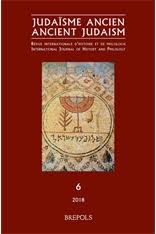This article contrasts the Samaritan legal approach with the approach of other Second Temple scribes, focusing on the legal traditions of Leviticus. First, the nature and text-critical character of the Samaritan Leviticus tradition vis-à-vis the other books of the Samaritan Pentateuch is described. Then the question is addressed of why the Samaritan scribes seem to have approached the legal material differently compared to many other parts of the Pentateuch. Next, the Samaritan legal approach is compared to the editorial approach of scribes associated with the community at Qumran. The article will conclude with a sketch of the trajectory of Jewish legal development during the Second Temple period, positioning works such as SP-Lev, 4QPent, 11QTemple, D and S on that trajectory. An argument is made that what distinguishes the works on the continuum is how revelatory authority was viewed in the communities that produced the works and, therefore, what kind of modification was legitimate.
Publication Type
- Article



